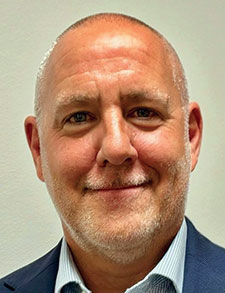The use of AI in healthcare has the potential to improve clinical care and efficiency, accelerate research, and empower patients and communities, but challenges must be addressed.

ENT Surgeons Explore the Benefits and Challenges of AI-Powered Scribes: Revolutionizing Documentation in Healthcare
In the fall of 2024, artificial intelligence-powered ambient scribe technology was rolled out across the University of California, San Francisco (UCSF) health system, allowing otolaryngologists and other clinicians to transcribe conversations with patients into text with just a click of a button.

Compliance Planning for Your Practice and Why It’s Important
Although compliance programming takes a lot of resources or may be already happening informally, all physicians should review their activities to ensure they are fulfilling their obligations under the law, as well as to their practice.

From Video Game Controllers to ORs: The Surprising Role of Gaming in Modern Medical Practices
Innovations initially developed for and by the gaming industry have moved into medical clinics and operating rooms.

How Residents and Medical Students Are Embracing New Technologies For Learning in 2025
Medical students and residents are embracing new technologies to help them study. This shift is driven by advances in artificial intelligence (AI), educational platforms, and other digital tools, along with demands for more flexible and personalized learning.

XR Mandatory Trainee Proficiency Before OR or Not? Which Would You Do?
In this article, we entertained the question of whether our trainees should be required to use extended reality (XR) technologies to achieve a certain level of proficiency before engaging with hands-on surgical experiences.

Surgeons Share Their Thoughts on Treating Velopharyngeal Insufficiency with Injectables
Correctly identifying the origin or cause of VPI is critical to successful treatment. Surgeons share their thoughts on treating velopharyngeal insufficiency with injectables.

Pay Equity in Healthcare from a Legal Perspective
Raising concerns about pay equity is a legally protected activity—employers cannot retaliate against you for bringing these issues forward.

Protecting Modifier 25
CMA members’ concerns about a recent reimbursement policy change Blue Shield had announced regarding evaluation and management (E/M) services billed with the Current Procedural Terminology (CPT) modifier 25. The new policy would reduce by 50% reimbursement for any non-preventive E/M service appended with modifier 25 and billed with a minor procedure code.

The Time Is Now to Prepare for the Next VBC Wave
VBC (value-based care) is coming to otolaryngology offices within the next five years through the Centers for Medicare and Medicaid Services (CMS) initiatives, and otolaryngology needs strategies for responding to how value, outcomes, and cost will be captured and measured
- « Previous Page
- 1
- 2
- 3
- 4
- …
- 50
- Next Page »